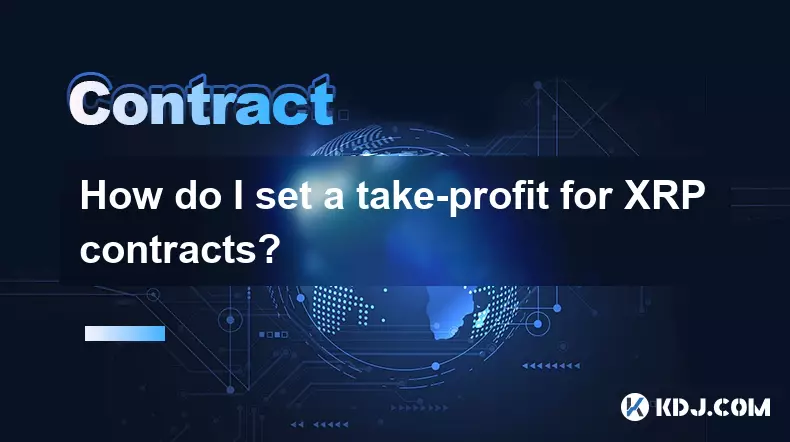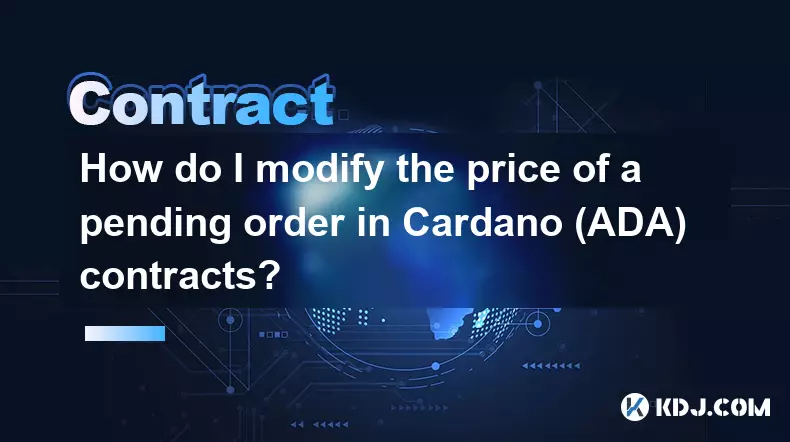-
 bitcoin
bitcoin $109523.663807 USD
-0.13% -
 ethereum
ethereum $4019.526508 USD
2.06% -
 tether
tether $1.000482 USD
0.00% -
 xrp
xrp $2.776815 USD
0.18% -
 bnb
bnb $958.942396 USD
0.12% -
 solana
solana $204.294698 USD
3.84% -
 usd-coin
usd-coin $0.999693 USD
0.00% -
 dogecoin
dogecoin $0.232115 USD
2.09% -
 tron
tron $0.338028 USD
0.84% -
 cardano
cardano $0.790920 USD
1.50% -
 hyperliquid
hyperliquid $44.871443 USD
5.60% -
 ethena-usde
ethena-usde $1.000322 USD
0.04% -
 chainlink
chainlink $21.034165 USD
2.60% -
 avalanche
avalanche $28.794831 USD
-0.54% -
 stellar
stellar $0.360466 USD
1.24%
How do I set a take-profit for XRP contracts?
A take-profit order in XRP futures locks in gains by automatically closing a position when the price hits a preset level, helping traders secure profits without constant monitoring.
Sep 23, 2025 at 06:54 pm

Understanding Take-Profit in XRP Futures Trading
1. A take-profit order is a tool used by traders to lock in gains when the price of XRP reaches a predetermined level. In the context of futures contracts, this order automatically closes a position once the target price is hit, ensuring profits are secured without requiring constant monitoring.
2. Setting a take-profit requires analyzing recent price action, support and resistance zones, and volatility patterns specific to XRP. Traders often use technical indicators such as Fibonacci extensions, moving averages, or pivot points to identify realistic profit targets.
3. Most cryptocurrency exchanges that offer XRP futures—like Binance, Bybit, or OKX—allow users to place take-profit orders directly within their trading interface. These platforms provide both linear and inverse futures contracts, each with different margin and settlement mechanics.
4. The placement of a take-profit should reflect a balance between ambition and probability. Targets set too high may never be reached, while those too close might exit prematurely during minor price fluctuations.
How to Configure Take-Profit on Major Exchanges
1. On Binance, navigate to the Futures trading section, select XRP/USDT, and open the order panel. Choose “Limit” under the Take Profit/Stop Loss section, input your desired price, and confirm the order alongside your entry.
2. Bybit allows users to set take-profit either at the time of opening a position or after entry. Use the TP/SL box below the chart, enter the trigger price or percentage gain, and select whether it's based on mark or last traded price.
3. OKX offers advanced conditional orders where you can define take-profit using trailing features or fixed prices. You can also link it with post-only or reduce-only options to prevent unintended executions.
4. Ensure your take-profit is set in 'reduce-only' mode to avoid increasing exposure accidentally. This setting guarantees the order only reduces an existing position rather than opening a new one.
Strategic Considerations for XRP Volatility
1. XRP is known for sharp moves, especially around regulatory news or exchange listings. These events can cause rapid spikes or drops, making static take-profit levels risky if not adjusted accordingly.
2. Utilizing partial take-profit strategies allows capturing gains at multiple levels. For example, closing 50% of the position at 10% profit, another 30% at 18%, and letting the remainder ride with a trailing stop.
3. Monitor the funding rate on perpetual XRP contracts. High positive funding suggests long positions dominate; setting take-profit near known liquidation clusters can improve execution quality.
4. Volume profile analysis helps identify price zones with significant historical activity. Placing take-profit near high-volume nodes increases the likelihood of execution before reversals occur.
Common Mistakes When Setting Take-Profit Orders
1. Relying solely on round numbers (e.g., $0.70 or $1.00) without confirming confluence with technical structure often leads to missed targets or early exits.
2. Ignoring the difference between mark price and last traded price can result in slippage or rejected orders. Exchanges use mark price to prevent manipulation, so align your take-profit accordingly.
3. Failing to update take-profit levels after new information—such as macroeconomic shifts or Ripple court rulings—can leave profits unrealized during sudden momentum surges.
4. Overcomplicating order setups with excessive conditions may lead to confusion or errors during fast-moving markets, especially during high-impact news events affecting XRP.
Frequently Asked Questions
Can I modify my take-profit after entering a position?Yes, most platforms allow real-time editing of take-profit orders. Access the active order tab, locate your position, and adjust the price or type as needed.
What happens if the market gaps past my take-profit level?If liquidity is insufficient at your specified price, the exchange may execute at the next available rate. This can result in better or worse fills depending on direction and depth.
Is it possible to set a trailing take-profit for XRP contracts?Yes, several exchanges support trailing take-profit mechanisms. You define a callback rate (e.g., 3%), and the trigger price follows the market upward, locking in profits if price reverses by that threshold.
Should I use take-profit in conjunction with stop-loss?Combining both enhances risk management. A stop-loss limits downside, while take-profit secures upside. However, ensure neither level is placed within typical market noise to avoid premature triggering.
Disclaimer:info@kdj.com
The information provided is not trading advice. kdj.com does not assume any responsibility for any investments made based on the information provided in this article. Cryptocurrencies are highly volatile and it is highly recommended that you invest with caution after thorough research!
If you believe that the content used on this website infringes your copyright, please contact us immediately (info@kdj.com) and we will delete it promptly.
- XRP Tundra: Dual-Token Innovation in the XRP Ecosystem
- 2025-09-27 20:25:12
- MUTM: Is This Crypto the Smartest Buy Now?
- 2025-09-27 20:25:12
- Crypto Millionaires: Unlocking Financial Freedom with the Right Investments
- 2025-09-27 20:30:01
- ETH Price Check: Crypto Analysts Favor These Moves Now
- 2025-09-27 20:30:01
- BlockchainFX, Bitcoin Hyper, and Crypto Presales: Finding the Next Big Thing
- 2025-09-27 20:30:01
- Galaxy CEO, Bitcoin, and the Powell Replacement: A $200K Prediction?
- 2025-09-27 20:30:15
Related knowledge

How do I enable the "scalping-only" mode for Cardano (ADA) contracts?
Sep 24,2025 at 03:19am
Understanding Scalping Strategies in Crypto Derivatives1. Scalping in cryptocurrency trading refers to executing multiple short-term trades within min...

How do I add margin to Cardano (ADA) contracts?
Sep 27,2025 at 07:54pm
Understanding Margin in Cardano (ADA) Smart ContractsCardano operates on a proof-of-stake blockchain that supports smart contracts through its Plutus ...

What is the maximum position limit for Cardano (ADA) contracts?
Sep 23,2025 at 11:00pm
Understanding ADA Futures and Derivatives Market Structure1. Cardano (ADA) futures contracts are offered by several major cryptocurrency derivatives e...

What is the maker fee for Cardano (ADA) contracts?
Sep 26,2025 at 09:01am
Understanding Maker Fees in Cardano (ADA) Contracts1. The concept of maker fees applies broadly across decentralized exchanges and smart contract plat...

How can I view open interest in Cardano (ADA) contracts?
Sep 24,2025 at 07:36am
Understanding Open Interest in Cardano Derivatives1. Open interest refers to the total number of outstanding derivative contracts, such as futures or ...

How do I modify the price of a pending order in Cardano (ADA) contracts?
Sep 27,2025 at 01:00am
Understanding Pending Orders in Cardano Smart Contracts1. Cardano operates on a proof-of-stake blockchain that supports smart contracts through its Pl...

How do I enable the "scalping-only" mode for Cardano (ADA) contracts?
Sep 24,2025 at 03:19am
Understanding Scalping Strategies in Crypto Derivatives1. Scalping in cryptocurrency trading refers to executing multiple short-term trades within min...

How do I add margin to Cardano (ADA) contracts?
Sep 27,2025 at 07:54pm
Understanding Margin in Cardano (ADA) Smart ContractsCardano operates on a proof-of-stake blockchain that supports smart contracts through its Plutus ...

What is the maximum position limit for Cardano (ADA) contracts?
Sep 23,2025 at 11:00pm
Understanding ADA Futures and Derivatives Market Structure1. Cardano (ADA) futures contracts are offered by several major cryptocurrency derivatives e...

What is the maker fee for Cardano (ADA) contracts?
Sep 26,2025 at 09:01am
Understanding Maker Fees in Cardano (ADA) Contracts1. The concept of maker fees applies broadly across decentralized exchanges and smart contract plat...

How can I view open interest in Cardano (ADA) contracts?
Sep 24,2025 at 07:36am
Understanding Open Interest in Cardano Derivatives1. Open interest refers to the total number of outstanding derivative contracts, such as futures or ...

How do I modify the price of a pending order in Cardano (ADA) contracts?
Sep 27,2025 at 01:00am
Understanding Pending Orders in Cardano Smart Contracts1. Cardano operates on a proof-of-stake blockchain that supports smart contracts through its Pl...
See all articles









































































